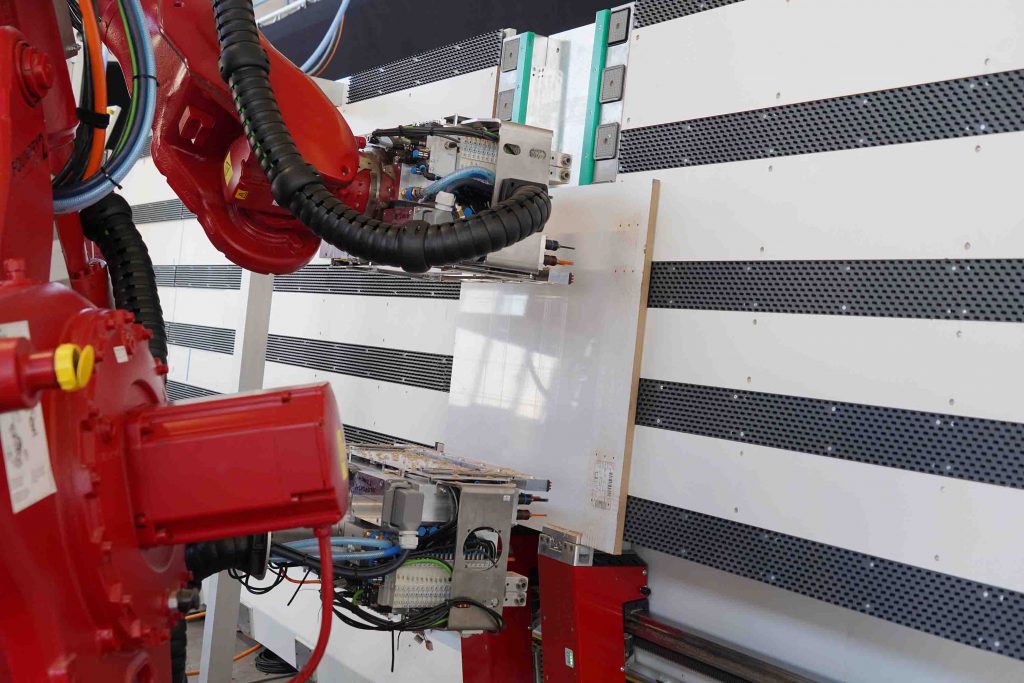The Modular Transport System by Zimmer Group is a part of a robot-based, highly flexible, productive and modular production cell. It takes care of workpiece transport within the cell, linking the loading and unloading stations with the machining and measuring stations. The individually controlled transport units (shuttles) can be used as masters or slaves, depending on the requirements, operating either separately or in tandem. This eliminates a fixed coupling of the transport, for example, by a continuous conveyor belt.
A decisive advantage over conventional machines is the extremely high system availability of this robotic machining cell. The transport system is designed so that shuttles can be discharged and exchanged separately during operation when required. All other system components have been devised so that no unnecessary disassembly is required during servicing or maintenance work.
A further innovation of the Modular Transport System is the integrated intermediate circuit buffer with a 48 V battery. In combination with the recuperation function of the transport units, this buffer reduces load current peaks by approx. 85 % and thereby the system’s energy consumption by more than 8%. The cell can be connected directly to an MES system. The machine control clearly identifies the individual workpieces by their bar codes. This guarantees comprehensive production control and a high production quality.
The whole system can process variable workpieces in batch size 1 and scale its capacity to almost any level when further function modules are added. The configuration of the cells reaches from a few meters with one or two machining stations up to 100 meters with more than 30 machining stations. This modularity enables customized solutions which can be put into operation quickly, since each module can be tested in advance. This shortens start-up time substantially in comparison to conventional machining equipment. The modularity can be easily adapted to specific applications or also to the logistical environment and necessary safety designs. No conventional system on the market can currently achieve such agility in a fully automated environment!

Each of these modules has a digital twin, which means that the software is already available for each module and tested by a HILS (hardware-in-the-loop system). If a new combination of modules is required, already before materials resource planning a digital twin of the entire cell can be generated, the material flow can be tested and the system capacity can be verified in real time. This HILS-based digital twin accompanies the system during its entire service life. It is used as a training device for new service personnel and for preliminary tests of new products. For real-time batch size 1 production, the day’s production can be simulated in advance and the “production status” can be unlocked or locked beforehand, thereby preventing a production bottleneck.
The central machining module consists of two industrial robots, each equipped with a multi-functional machining unit. The two cooperating robots work in a small space. Here the workpiece is temporarily stopped within the otherwise continuous process. The small machining space makes it possible to minimize machining tolerances. Another great challenge is how to achieve production at a precision of +/- 0,1 mm with commercially available robots. To meet this challenge, our “Know-How Factory” has developed an inline correction function that permanently monitors the required precision and makes automatic corrections if necessary.

